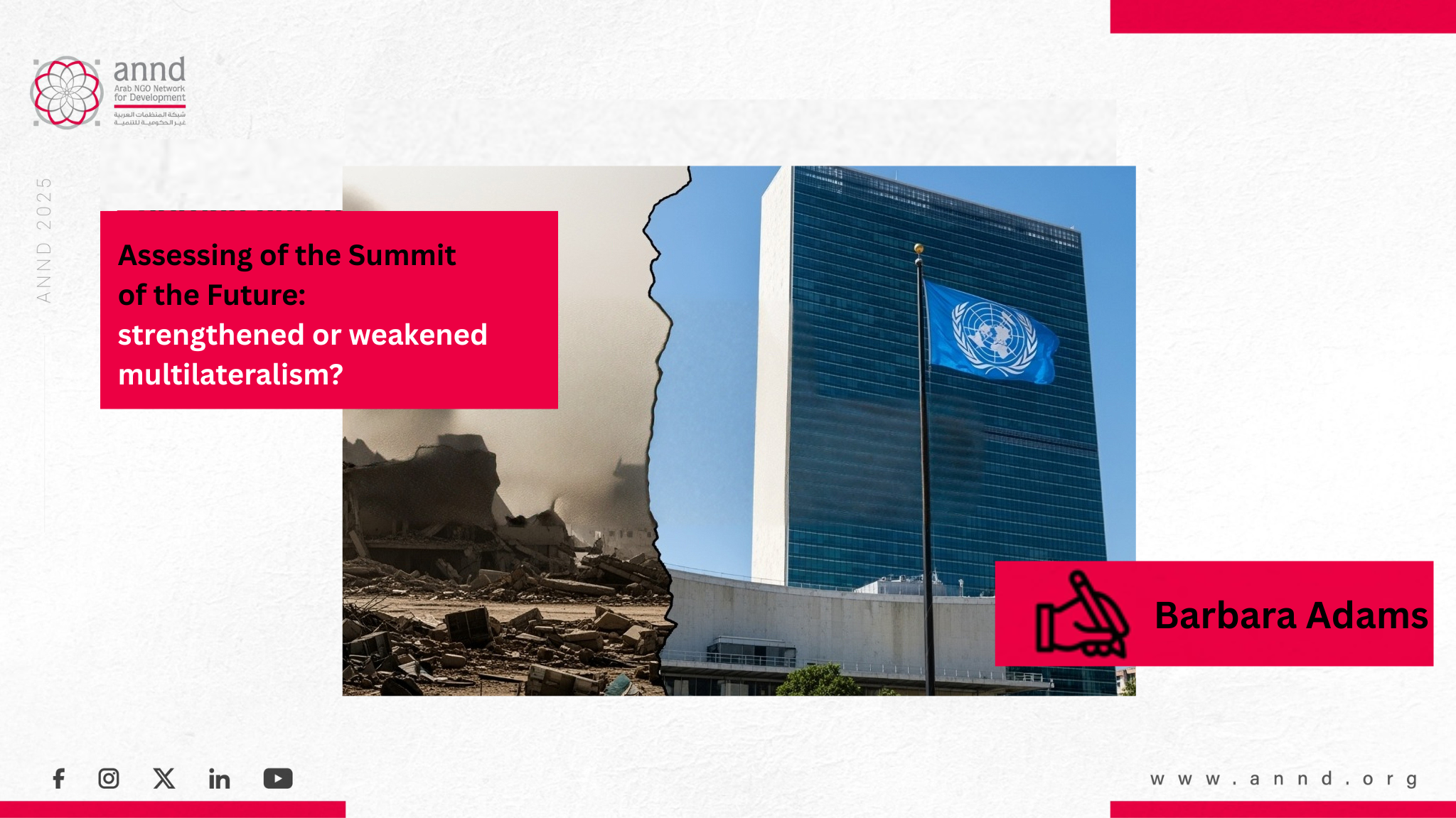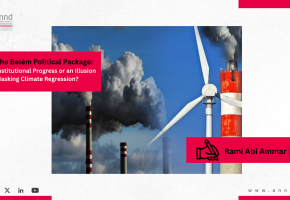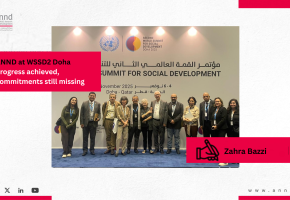
Assessing of the Summit of the Future: strengthened or weakened multilateralism? - Barbara Adams

Assessing of the Summit of the Future: strengthened or weakened multilateralism,
especially in the light of UN 80 - Barbara Adams
The
Summit of the Future that met at UN headquarters in September 2024 had a very
timely and ambitious agenda that placed squarely before the world’s heads of
state and government the interlocking crises, conflicts, skyrocketing
inequalities and the need to address global governance failures.
Success
with the agenda setting and preparations however was not met with success on
the outcome or consensus agreement – the Pact for the Future.
This
was particularly noticeable with the need to correct the International Financial
Architecture, as the Pact has now explicitly recognized the independent authority
of the Bretton Woods Institutions (BWIs), with their existing decision-making
process of one dollar,
one vote.
With
so many developing countries already facing multiple crises including debt
crises, limited policy and fiscal space, high interest rates, trade and
investment constraints, devasting conflict situations and civilian deaths, and cutbacks
in ODA, the enhancement of the BWIs could only be seen as a step backwards.
This
would have been the straightforward assessment one year ago – progress in that the agenda addressed
governance gaps, but lack of progress on the results.
The
UN now faces another major crisis: severe cuts to an already inadequate budget,
due mainly but not exclusively to the refusal of the US administration to meet
its treaty obligations in contributing its 22% share of the UN regular
budget.
This
has propelled a UN liquidity crisis with staff firings and other consequences underway,
programme cuts and UN entity mergers to come. Driven by the need to revise the UN budget, the
UN Secretary- General launched in March 2025 the UN80 Initiative with three
main workstreams: Efficiencies and Improvements, Mandate Implementation Review,
and Structure and Programme Realignment.
The
major responsibility to respond to this budget crisis now rests with the Member
States, charged with a task that will likely re-arrange UN priorities and reshape,
reduce and restructure institutions and programmes.
Certainly, a quality re-structuring of the UN is long overdue. Its
current governance Charter is eighty years
old, put in place when only fifty-one
countries were politically independent. Similarly, the terms of global economic governance were determined in
1944 at the Bretton Woods conference, attended by a scant forty-four governments, and have continued to be shaped and dominated
in the economic interests of the USA and its currency.
Decades
of big power politics have extended their bilateral agendas and global and
regional rivalries into multilateral spaces, influencing and steadily
undermining the deliberations and outcomes for a people-centred
multilateralism. Economic globalization and the accompanying economic
pragmatism have limited the policy space of small and medium-sized countries to
pursue domestic alternatives or diverse policy paths, and they have become
accomplices—willing or otherwise—to a failing global governance setup.
A case can be made that the Summit exposed and analyzed governance flaws
(primarily of the Security Council and International Financial Architecture)
that were steadily but surely undermining the UN Charter and related treaties
and institutions. These have contributed to “forum shopping” and the steady downward
slide of the UN, from the premier global governance place to that of a junior
partner with IMF, G20, NATO, possibly OECD and BRICS, and more being shaped.
The blatant abandonment of the use of soft power by the current US
administration as it embraces tariff warfare and "who pays”/transactional
politics has removed the veneer of team player. This blunt unilateralism has elevated
to another level the deceptive state of international cooperation and has suddenly
re-cast the Summit outcome, as it was adopted by consensus at the highest
political level, as a premier item in the push-back toolkit of high-level global
agreements adopted by all Member States.
The
Pact for the Future and its work
programme for implementation are framed on the main pillars of work of the
United Nations: peace and security, sustainable development and human rights.
The Summit, its outcome document and implementation plan have morphed to become
a major mobilizer against the pressures from the United States to reduce the
United Nations to what it calls its core function, that of peace and security.
While the US
administration has denounced the UN 2030 Agenda and the Sustainable Development
Goals, they continue to be cited by the vast majority of Member States as
central to the work of the UN including as key to the Pact implementation.
The decades-long behaviour of big powers – now taken to a new
level - has generated some pushback from the majority for which collective
decision-making and agreement are essential for their seat at a governance
table, their collective security and just global economic governance. It has
also spurred different analyses of the future global governance configuration.
Some
are comparing this to an epoch after a “world” war and putting energy and
commitment into redoing the governance players and issues. And to re-make the
global agreement – UN Charter - for today and tomorrow’s challenges.
Others
articulate the situation as critical but not existential, such that they must put
lower on the policy-priority ladder their three or four key issues to “save
multilateralism” and the UN Charter and its values.
Still
others see an opportunity for new power centres, moving from the UN and
multilateralism to multipolarity. This has triggered a debate on
multilateralism and multipolarity or multilateralism versus
multipolarity.
Multipolarity
may still be a might-is-right governance regime but with a few more “mighties"
and more policy – and possibly fiscal - space for the rest.
It
is unclear what the multiple poles might be. Something bi-polar or broader such
as regional and sub-regional networks or South-South trading partners, and
poles that could be overlapping, complementary, or competitive?
So
far, as power centres shift, all iterations have paid minimal if any attention
to the disproportionate power and influence of TNCs and high net-worth
individuals, even as many Member States and the UN have fallen prey to
corporate partnerships and the need for so-called innovative financing.
Recent publications

The Belém Political Package: Institutional Progress or an Illusion Masking Climate Regression? - Rami Abi Ammar
